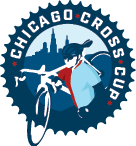Coach’s Corner – Speed Skills and the Pedal Stroke
Speed skills, as defined by Joe Friel, are the ability to move quickly and efficiently. The better you are at turning the pedals over the better your economy of effort is on the bike. The workouts in this forum last week addressed an important aspect of this concept in high cadence training. Genetics come into play to a certain extent in this area, but as with any aspect of sport your efficiency is something that will improve with specific training.
A glaring example of this overall concept comes to mind with a road racer that I work with named Nicolai Brochner. He and I have spent some time comparing our watts per kilo vs. speed while riding side by side and in varying wind conditions. We’d have these little “contests” to see how little work we could do while maintaining the same speed together. He always wins! Nicolai looks almost perfect on the bike. Everything about his position and movement, pedal stroke included, is geared toward maximum result with the smallest possible amount of effort.
To develop this form, and in addition to the aforementioned high cadence workouts, we also focus on the biomechanics of his pedal stroke. Technique is the key here, not force or endurance, so the effort is akin to a soccer player working on dribbling skills as opposed to doing wind sprints. Improving this technique requires ending this specific portion of your workout before fatigue sets in. Fatigue and sloppiness go hand in hand and this is all about refining the skill.
Spin ups, while not very taxing, require focus. 5 to 10 after you’ve properly warmed up make for a good addition to most speed skill oriented rides. Perfectly flat or downhill terrain is best suited to allow for an effective workout with these as power should be all but eliminated from the equation:
Increase cadence gradually over a minute to your maximum. Maximum cadence is the highest that you can maintain without bouncing. Hold it there until you are no longer able to maintain, and take at least 3 minutes off between these efforts.
Additionally there is a “dead spot” in power at the top of the pedal stroke that can be decreased by proper technique, again fueled by specific drills. Of those designed to increase the economy of the pedal stroke my favorite are isolated leg training drills (ITL). While high cadence intervals and spin-ups are generally prescribed during the base phases (now for a cross racer!), ITL drills are a great way to begin any type interval based workout throughout the season. Think of grinding a circle out rather than pounding the pedals. We call it “churning butter”. ITL drills not only develop your ability to do this properly, but also serve as a reminder at the beginning of a ride to focus on this skill throughout:
Unclip one foot and begin pedaling with just one leg for 30 seconds. Switch back and forth from right foot to left continuously for 3 reps on each leg, for a total of 3 minutes per set. Recover for 3 minutes and do it again. 3 to 5 sets is generally plenty, and if you are in the middle of a rep and start losing it (a pronounced “clunk” in the top of your pedal stroke) then stop and consider that one rep. Start slowly and increase as you become more efficient. You’ll notice that the very top of the pedal stroke is the most difficult portion. That “clunk” is a gap in power. As you improve that gap will disappear! Now put both feet in the pedals and do the same thing, and this is the pay dirt, consistent power throughout.
Questions? Shoot an e-mail over to [email protected].
Rob Kelley
TRAINING BIBLE COACH
